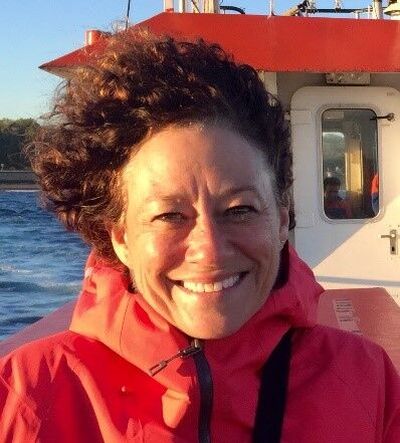Q-and-A with the Kootenai Environmental Alliance’s new executive director

Idaho’s oldest environmental organization has a new executive director.
Shelley Austin became the executive director of the 48-year-old Kootenai Environmental Alliance in March.
Austin, a resident of Oregon, relocated to Coeur d’Alene last month. Prior to stepping into the executive director role, Austin worked at several nonprofits in Oregon, including the Oregon Shakespeare Festival and as the executive director of the Jackson County Library Foundation.
With the National Academy of Sciences starting a multiyear review of water quality data in Lake Coeur d’Alene, and North Idaho’s population continuing to grow, Austin steps into a complicated mix of environmental, political and social issues.
Below is a Q&A with Austin. It has been edited slightly for clarity and length.
How did you get involved in environmental work? Was there a defining moment or story that pushed you in that direction?
I’ve always supported environmental organizations in my area because I’m a skier, biker, backpacker, hiker. I’ve always lived in the mountains so the environment has been a primary cause for me. My son studied environmental studies at Lewis-Clark State College, and we often had long conversations about what is going on and what can we, citizens and active outdoors people, do? How can we effect change and not become overwhelmed with climate change and huge environmental issues? We spent every weekend of my childhood camping, hiking, touring and talking about the mountains.
What drew you to apply for the Kootenai Environmental Alliance executive director job?
I was looking for work in an environmental organization literally anywhere in the United States. My folks moved to Coeur d’Alene in 1977 and I visited them on Fernan Lake. When I saw the posting for this position, of course I applied. Kootenai Environmental Alliance is the oldest environmental nonprofit in Idaho. They needed someone with a set of strong nonprofit skills, and I qualified. I believe KEA has all the potential, all the elements within the organization now to address the big issues in the Coeur d’Alene Lake confluence. KEA has the grassroots base, the credibility and the connections to effect change.
What was your most recent job and how do you anticipate that supporting your new role at KEA?
I was executive director for the Jackson County Library Foundation (in Oregon), and have been an executive director for three other organizations. When I took the library foundation job in 2009, it was right when the effects of the recession were most pronounced. That organization had completed a capital campaign and had become a bit complacent and rather inactive, so I redefined, reinvigorated the activities and fund raising, and helped to change the status of the library system there. All that will help me guide KEA through its recent transition and help us move from program-based fundraising to a broader base of funding for our activities.
What are your primary objectives and goals stepping into this new job?
My primary goal is to use all the history and enthusiasm that created and sustained this organization to address the enormous threat of declining water quality in the Coeur d’Alene Lake confluence.
I’d like to use the alliance we have established in the last 48 years to incorporate all the similar efforts of other organizations addressing water quality, and become the nexus that ties citizenry, organizations at all levels of government (federal, state, county, city, the Coeur d’Alene Tribe) and other associations together, into a focused and effective effort to make a change. I’d like to start now identifying a project or an issue that we can all rally around that truly improves the situation.
Maybe that is a setback that preserves the lake shoreline. Maybe it’s a community resilience plan that involves all stakeholders in our region to prepare for climate change adaptation and lake water issues.
We have a lot of great people and scientists involved. We have community organizing tools, lots of good models for community engagement from other areas in the United States, lots of support from waterkeepers and others already working on these issues – and with the National Academy of Sciences doing a two-year study, we have a window of opportunity to create a grassroots effort that could launch or culminate in the next two years, to coincide with the results of the NAS study and with KEA’s 50th anniversary.
In your opinion, what are the primary challenges that KEA faces?
As with all nonprofits, and certainly in these times of COVID-19, fundraising is our primary challenge.
Regionally, what are the main environmental challenges North Idaho faces going forward? What role do you see KEA playing in that?
I cannot address all the environmental challenges, because, as you know, Coeur d’Alene Lake is at the tail end of a Superfund site (Bunker Hill area). What we can address, and will, are the issues of lake and stream water quality. We work with several organizations to provide a high school curriculum to 11 area high schools, called the Confluence Project, which teaches kids about the confluence, water issues and activism. We host water tours on the lake. We conduct field trips and outdoor days for elementary schools. We support a community garden, and lots of other activities that all address aspects of climate change and restoration, conservation and protection opportunities in our North Idaho Panhandle region.